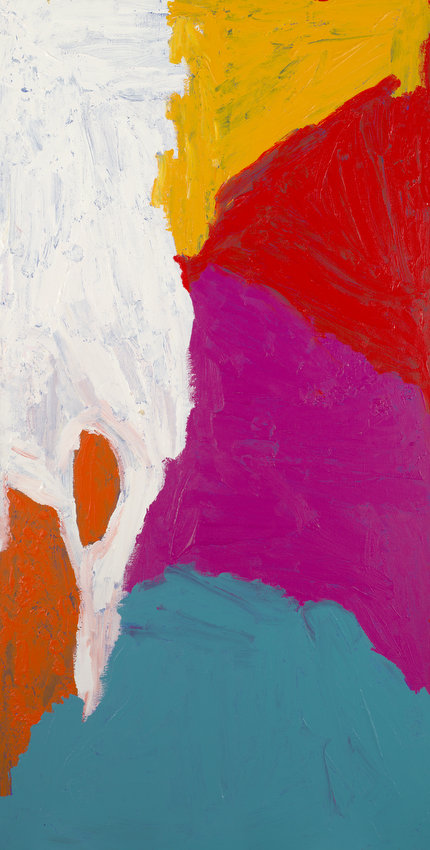We acknowledge the Traditional Owners of the land on which the Queensland Art Gallery | Gallery of Modern Art stands and recognise the creative contribution First Australians make to the art and culture of this country.

Mirdidingkingathi Juwarnda Sally Gabori / Kaiadilt people / Australia c.1924–2015 / Dibirdibi Country 2007 / Synthetic polymer paint on linen / Purchased 2008. The Queensland Art Gallery Foundation Grant / Collection: Queensland Art Gallery | Gallery of Modern Art / © Mirdidingkingathi Juwarnda/Licensed by Viscopy, 2016
Mirdidingkingathi Juwarnda Sally GaboriDibirdibi Country 2007
Not Currently on Display
Dibirdibi Country 2007 conveys the story places of Dibirdibi, the Rock Cod ancestor, and charts his creative journey along the coastlines of Bentinck Island and Sweers Island in the Gulf of Carpentaria, in far north-west Queensland.
These stories and their associated places belonged to the artist’s husband, Pat, whose traditional name was also Dibirdibi. Sally Gabori’s paintings seem abstract in nature, but retain certain representational elements crucial to mapping her country through shape, form and colour. By depicting the country they both loved, her paintings brought her closer to her late husband.
Mirdidingkingathi Juwarnda Sally Gabori (c.1924–2015) came to painting at the age of 81. She was one of a handful of leading artists from Indigenous communities who worked in a bold personal style outside the established traditions of painting country. Others include Emily Kame Kngwarreye, Ginger Riley, Makinti Napanangka, Wakartu Cory Surprise and Nora Wompi.
Gabori is widely acclaimed for her vibrant use of colour depicting the intimate connections between the Kaiadilt people of Bentinck Island, their country and their history.
For her first 23 years, she moved between her family’s main homeland sites, living according to her unbroken ancestral culture. Then, in 1948, following devastating drought, storms and a near 4-metre tidal surge, she and her kin were moved to nearby Mornington Island.
Gabori returned to Bentinck Island whenever possible and maintained a strong connection to her Kaiadilt country through language, song and storytelling, all of which she incorporated into the act of painting.
Discussion Questions
1. If you were to paint a picture of where you come from, what places and stories would you include?
2. How do Indigenous artists communicate stories and places significant to their culture through painting?
Classroom Activities
1. Make a map of the route you take to school each day. Use symbols, shapes and colours to identify important objects, tracks and landmarks. Include a key to the map so someone else can follow it.
2. Find an aerial map of your suburb and print out a copy. Identify its major natural and man-made landmarks, such as rivers, parks and shopping centres. Create an artwork about your suburb that includes the landmarks you identified.